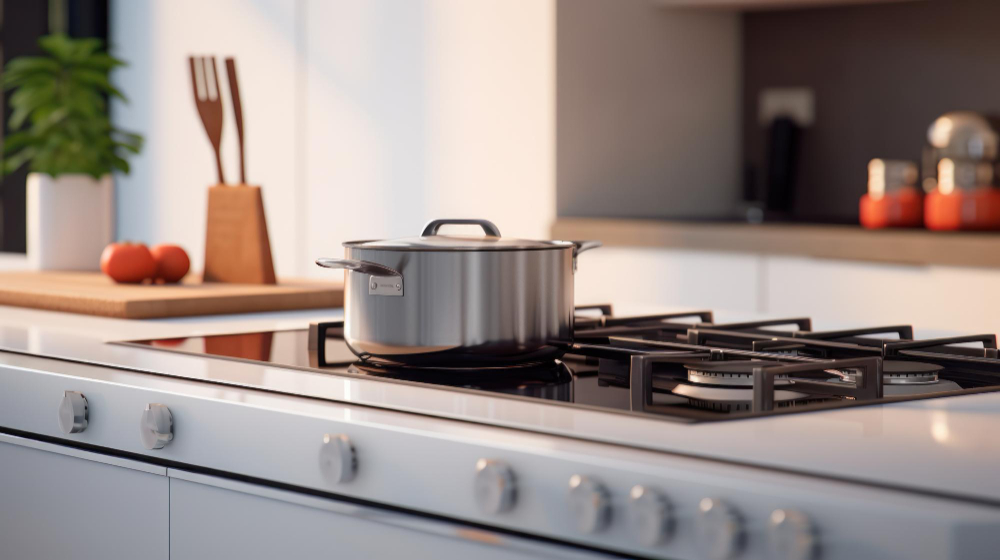Non-stick cookware has become a staple in kitchens around the world, including in the UAE, due to its convenience and ease of use. From frying pans to saucepans, this type of kitchenware allows for healthier cooking with less oil and simplifies clean-up. However, to enjoy the benefits of non-stick cookware, it is essential to understand how to use and maintain it properly. This guide will explore safe practices, maintenance tips, and essential information about different types of non-stick cookware.
Understanding Non-Stick Cookware
Non-stick cookware is typically made with a coating that prevents food from sticking to the surface. The most common materials include Teflon, ceramic, and granite. Each of these has its own advantages and considerations:
- Ceramic Cookware: Known for its non-reactive surface and ability to withstand higher temperatures, ceramic cookware is a popular choice for health-conscious cooks. It is free from harmful chemicals often found in traditional non-stick coatings.
- Granite Cookware: This type offers a unique aesthetic and is usually more durable than standard non-stick options. Granite cookware is also known for its excellent heat distribution, making it ideal for various cooking methods.
- Traditional Non-Stick: Made with a Teflon coating, traditional non-stick pans are often more affordable and easy to clean. However, it is crucial to handle them with care to avoid scratches and wear.
Choosing the Right Non-Stick Cookware
When selecting a non-stick cookware set, consider the following factors:
– Material: Choose the material that best suits your cooking style. For example, a ceramic saucepan is excellent for simmering sauces, while a frying pan is perfect for sautéing vegetables.
– Size: Ensure your cooking pots and pans come in various sizes to accommodate different meal preparations. A soup pot for hearty soups, a pressure cooker for quick meals, and a set of pots and casserole dishes for family gatherings are all great additions.
– Compatibility: Check if your chosen cookware is suitable for your stove type, whether it’s gas, electric, or induction.
Safe Cooking Practices with Non-Stick Cookware
To ensure the longevity and performance of your non-stick cookware, follow these safe cooking practices:
- Use Low to Medium Heat: Non-stick surfaces can deteriorate when exposed to high temperatures. Always cook on low to medium heat to preserve the integrity of the coating.
- Select the Right Utensils: Avoid metal utensils that can scratch the surface. Instead, opt for silicone, wood, or plastic tools when cooking. This will help maintain the non-stick pans and overall quality of your kitchen equipment.
- Avoid Overheating: Never heat an empty non-stick pan. Overheating can release harmful fumes and damage the cookware. Always add oil or food before heating.
- Use Oil Sparingly: While non-stick cookware requires less oil than traditional cookware, a small amount can enhance flavor and further protect the surface. Choose oils with a high smoke point, such as canola or avocado oil.
Proper Maintenance of Non-Stick Cookware
To keep your non-stick cookware in top condition, implement these maintenance tips:
- Cleaning: After each use, allow the cookware to cool before cleaning. Avoid using abrasive cleaners or scrubbers, which can damage the surface. Instead, wash with a soft sponge and mild dish soap. For stubborn residues, soak the pan in warm soapy water for a few minutes.
- Storage: Stack non-stick pots and pans with care to avoid scratches. Consider using a dish rack or placing a soft cloth between pieces. This will help maintain the integrity of the surface and prevent damage.
- Avoiding Thermal Shock: Do not expose hot cookware to cold water. This can warp the material and lead to peeling. Allow your cookware to cool naturally before washing.
- Periodic Seasoning: For some non-stick surfaces, especially those made of ceramic, seasoning the pan occasionally can improve its non-stick properties. Apply a small amount of oil and heat on low for a few minutes, then wipe off the excess.
When to Replace Your Non-Stick Cookware
Over time, even the best kitchen items wear out. Here are signs that it might be time to replace your non-stick cookware:
– Scratches and Peeling: If the coating shows significant scratches or peeling, it’s time for a replacement. Using damaged cookware can lead to food sticking and potential ingestion of coating particles.
– Discoloration: While some color change is normal, excessive discoloration can indicate degradation of the non-stick surface.
– Warping: If your pots and pans no longer sit flat on the stove, they may not heat evenly, making them less effective.
Enhancing Your Kitchen with Complementary Kitchenware
In addition to non-stick cookware, consider investing in other essential kitchen equipment to round out your cooking arsenal:
– Cutlery: A good set of knives can enhance your meal prep, making it quicker and more efficient.
– Drinkware: Stylish drinkware can elevate your dining experience, whether you’re serving guests or enjoying a meal alone.
– Cake Mold and Serving Dishes: For those who enjoy baking, having a variety of cake molds and serving dishes can be a great addition to your collection.
– Kettle and Canister: A quality kettle for boiling water and canisters for storing ingredients can enhance your kitchen’s functionality.
Final Thoughts on Using Non-Stick Cookware
Non-stick cookware is an invaluable asset in any kitchen, including those in the UAE. By understanding how to use and maintain your cookware set, you can ensure it lasts for years to come. Remember to follow safe cooking practices, clean and store your cookware correctly, and replace items when necessary.
With the right approach, you can enjoy hassle-free cooking with your non-stick pans, pots and pans, and other essential kitchen items. Happy cooking!
Read more Blogs on – blokets.co



